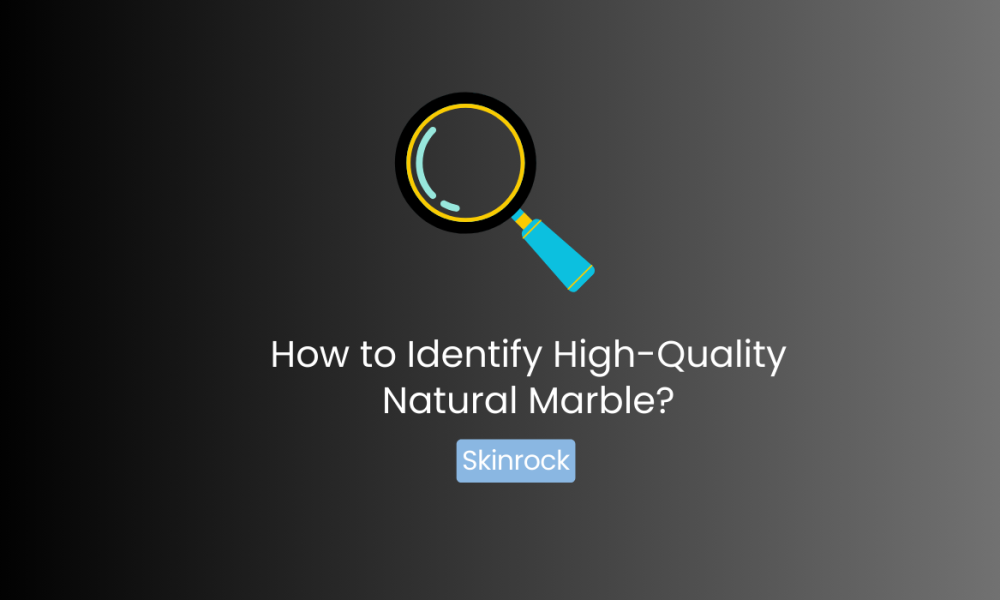Natural marble is a luxurious and timeless material that elevates the aesthetic and value of any space. However, not all marble is created equal, and choosing high-quality marble can make a significant difference in your project’s durability and appearance. In this buyer’s guide, we’ll walk you through the key steps and tips to identify high-quality natural marble.
1. Examine the Surface Appearance
High-quality natural marble is distinguished by its surface finish and appearance.
- Veining Patterns: Look for consistent and well-defined veining. Irregular or faded veins might indicate lower-quality marble.
- Color Uniformity: While natural marble has variations, premium marble maintains a harmonious color tone.
- Polish: Quality marble will have a high-gloss finish that reflects light evenly without dull spots or scratches.
2. Check for Porosity
Natural marble is porous, but high-quality marble should have a lower porosity level, reducing its susceptibility to stains and water absorption.
- Perform a water test: Pour a small amount of water on the marble surface. If it absorbs quickly and leaves a dark spot, the marble may be too porous for high-traffic areas.
3. Assess the Thickness and Dimensions
High-quality marble is cut with precision and maintains a uniform thickness.
- Measure the slab thickness: A standard thickness for durable marble slabs is 18mm or more.
- Inspect the edges for smoothness and consistency.
4. Inspect for Cracks and Fissures
Cracks or fissures can compromise the strength and longevity of marble. Carefully check the surface and edges for any visible imperfections.
- Natural Fissures vs. Defects: While natural fissures can add character, structural cracks are a sign of poor quality.
5. Evaluate the Source and Type
The origin of the marble plays a role in its quality. Renowned sources like Italy (Carrara and Calacatta) and Greece (Thassos and Volakas) are known for premium marble.
- Ask for the origin certification from the supplier.
- Research the specific type of marble and its properties.
6. Test the Durability
Durability is a key factor when choosing marble for construction projects.
- Perform a scratch test: Use a sharp object to lightly scratch the surface. High-quality marble resists scratches better than inferior grades.
- Conduct a hardness test: Genuine marble ranks 3-5 on the Mohs scale. Anything softer might not be true marble.
7. Check the Supplier’s Reputation
The reputation of your supplier can be an indicator of the marble’s quality.
- Read reviews and testimonials.
- Visit the supplier’s showroom to inspect their range.
- Request samples before making a bulk purchase.
8. Verify Maintenance Requirements
Ask the supplier about the maintenance needs of the marble. High-quality marble is typically easier to seal and clean, making it more practical for everyday use.
Also read: Top Benefits of Using Natural Marble in Construction
FAQs About Identifying High-Quality Natural Marble
1. What is the difference between natural and engineered marble?
Natural marble is quarried stone with unique patterns and textures, while engineered marble is man-made using stone dust and resin. Natural marble is more authentic and luxurious.
2. Can low-quality marble be improved with treatments?
While sealing and polishing can enhance appearance, they cannot compensate for the inherent structural weaknesses of low-quality marble.
3. How can I tell if a marble slab is genuine?
Genuine marble feels cool to the touch, has unique veining patterns, and reacts with acidic substances like vinegar by fizzing or etching.
4. Are darker marbles of higher quality than lighter ones?
The quality of marble depends on its origin, composition, and processing, not solely on its color. Both light and dark marbles can be of high quality.
5. Is expensive marble always better?
Not necessarily. The cost of marble depends on rarity, origin, and demand. Always evaluate quality based on physical characteristics and supplier reliability.
Conclusion
Identifying high-quality natural marble requires attention to detail, from examining the veining and thickness to testing its durability and sourcing. By following this guide, you can ensure that your investment in marble adds lasting beauty and value to your space.
Ready to buy marble for your next project? Partner with trusted suppliers to find premium-grade marble that meets your style and functional needs.

